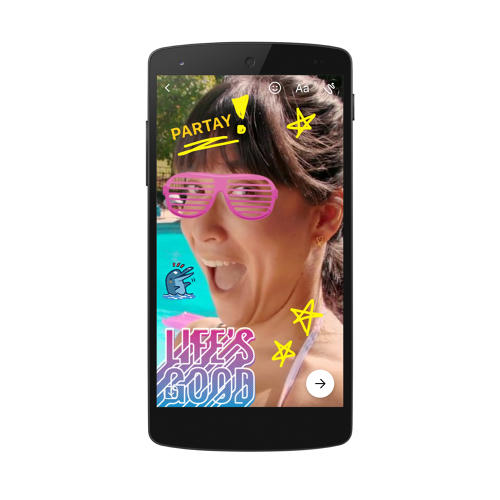Facebook Revamps Its Messenger App For Our Image-Driven Culture
In keeping with social media’s visual push, Facebook has revamped its Messenger app for more streamlined, image-driven, and personalized communication.
Rolling out globally over the next few days after two years in development, the improved app—called Messenger Camera—centers around a faster, more user-friendly, artificially intelligent in-app camera that integrates art and special effects into photos—such as scribbling messages or posting pre-set art filters. Now users can tap or press a shutter button in the center of the Messenger screen to take photos or record a video, then choose from thousands of newly added stickers, frames, 3D masks, and effects to dress up their shots and text messages before sending them.
Other improvements include an upgraded inbox that lists favorite friends and those currently using the app, instead of having to click to another section, as well as an ability to resend the same content concurrently to multiple, separate conversations. More features are planned for the near future.
“It’s technology meeting art that allows you to construct visual pieces that you would not be able to do anywhere else,” says Stan Chudnovsky, head of product for Messenger.

“Our plan has been to figure out what people want and try to give them the most efficient way of doing that,” he adds. “The world has been moving toward visual messaging, with people sending hundreds of videos and images to each other. It wasn’t like that before, when people mostly wrote messages. Now it’s video and images augmented with text, so it’s flipped.”
The Messenger team developed the improvements after noting that emoji and sticker use was outpacing text—to the tune of 2.5 billion emojis, photos, stickers, and videos sent daily on Messenger—and users increasingly preferred video to audio calls. In addition, conversations were becoming more immediate and targeted.
“These transitions are the result of: As technology improves, people’s behavior changes, and then we want to lean into that and make it easier for people to do what they’re trying to do,” says Peter Martinazzi, director of product management.

Facebook enlisted design ideas from several social media influencers after bringing them to its San Francisco headquarters for brainstorming sessions. Some who have monetized their followings see them as applicable to business as socializing.
Ally Chen, who consulted on user experience and contributed the “You Gotta Love a Latte” filter, sees the improvements as a way to even further personalize and diversify an online presence that already draws some 20 million views to her San Francisco-based Fashion By Ally lifestyle channel and social media accounts.
Kathy Cano-Murillo, who heads the Arizona-based Latina lifestyle and crafts consultancy The Crafty Chica, plans to use the improvements to more personally engage with her collective 200,000 social media followers and newsletter subscribers.

“I’m going to use the new features to be more personable when people write to me,” says Cano-Murillo. “Instead of just typing ‘Thank you’ or adding a smiley face, I can enhance it so much more by using one of the cool stickers because it adds more personality, shows my appreciation that they’ve written, and makes them feel more special. I have two filters on there—’Stay Gold’ and ‘Craftastrophy’—so I’ll be telling everyone to use them.
“I’ve built my entire company through social media,” she adds. “It’s about creating friendship and connecting with other creative, positive people. So the more personality, the better.”
[UPDATE: On Dec 19, in response to its most requested feature, Facebook Messenger announced the ability to video chat in groups. Group Video Chat enables users to see up to six people at a time, with up to 50 able to connect with that group via voice, text, stickers, emojis and GIFs.]




Fast Company , Read Full Story
(20)













